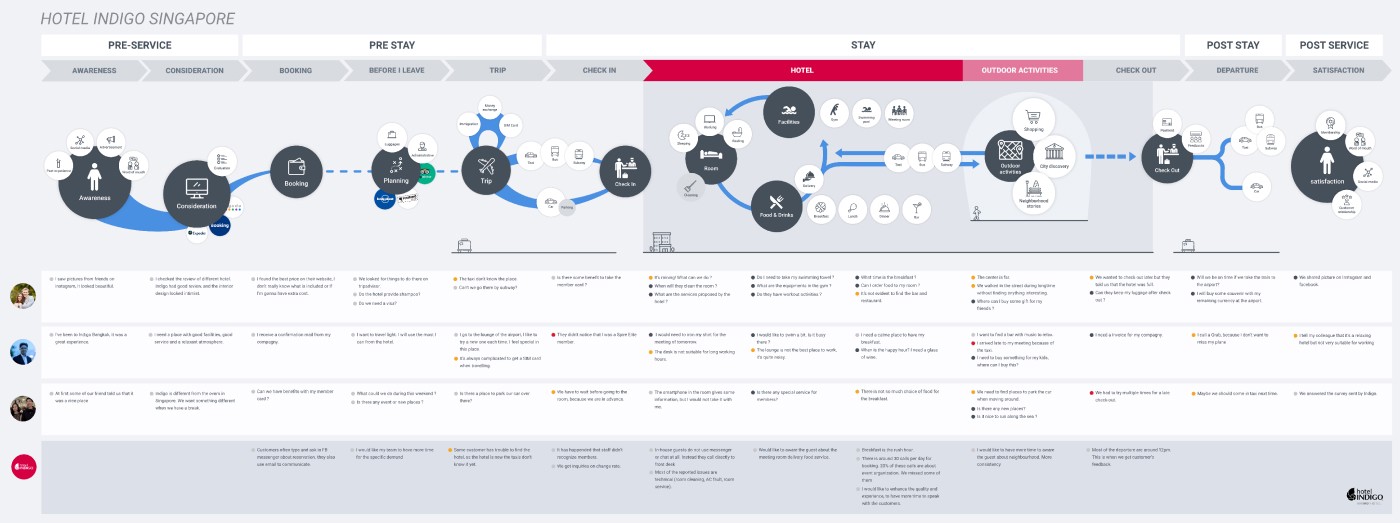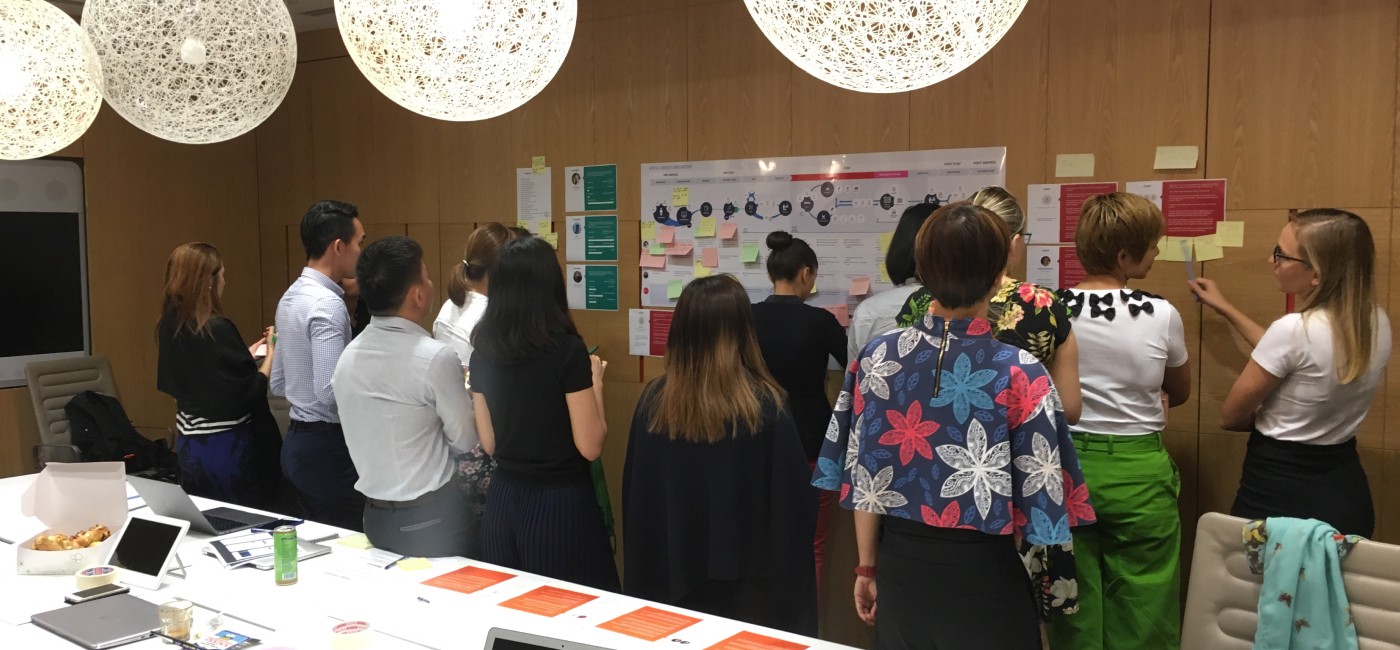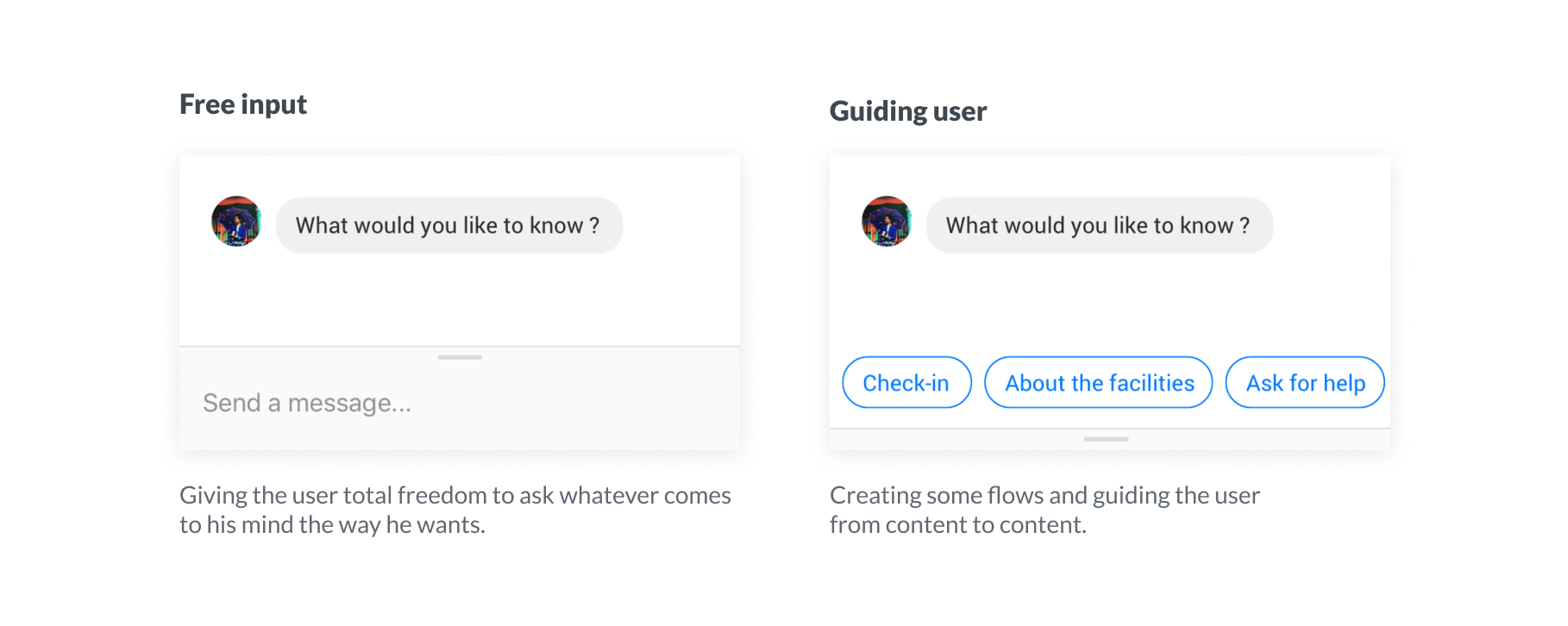
IHG Hotel Indigo
Chatbots for Hotel Indigo Singapore, Bangkok & Bali

Hotel Indigo, a chain of luxurious boutique hotels, was looking for a way to improve their customer satisfaction and, as Chatbots were trending at the time, was looking for a technical consultant to implement one.
As part of the UX team on the project, confirming that a Chatbot could really bring value to the guests experience and finding what could be his purpose was our first goal.
Design Process

Identifying Need
To find out what the guests were needed, we decided to become one! We started this project by doing a safari inside Hotel Indigo Singapore. Finding out the pain points by experiencing them but also looking around and pushing the limit to find where the experience was lacking could only be done from within the hotel.

The safari was part of other design activities such as the analysis of hundreds of customer reviews combined with real customers and stakeholders interviews allowing us to create a detailed Customer Journey Map highlighting key moments of the Journey for the main personas.

Brand side
We found out from the brand side that they wanted to promote their selling point called “neighborhood host”, a staff member dedicated to telling stories about the neighborhood of the hotel, from tasting local food to visiting historic monuments and even places to post on instagram.
Guests side
From the guests side, they wanted to have someone at the front desk able to give them information on what to do, what to eat and what to discover nearby.
Problem Space
Problem Space & Opportunities
Time-consuming tasks
Check-in, check-out, basic request from guests, answering the phone…
Personalized experiences for Guests
Each guest is different, different needs, different tastes, different availabilities.
Information transmission
Never make a guest repeat himself because of a staff shift.
Co-creation Workshops

This workshop was the birth of Hotel Indigo’s Virtual neighborhood Hosts, available 24/7 to help guests for all basic inquiries and redirecting them to a real Host for more advanced ones.
Solutions
Analysing the options
When designing a Chatbot, you have 2 big questions to solve : - Do you want to guide users from content to content? - Do you want to give users total freedom to ask whatever come to their mind? (that’s where the AI is needed).
As you can guess, the first one can put some critical barrier for users and the second one is a challenge that even the biggest companies are still trying to solve… The choice was not easy and the one we made was actually a mix between the 2: Creating flows and guiding users from one content to the other.

Defining flows
A Chatbot is all about content and you'd better have enough of it to answer at least 80% of the inquiries otherwise it would just be a tool redirecting guests to the real neighborhood host.
That's why we decided to have a closed beta during a few weeks and monitor every interactions between the guests and the Chatbots. This allowed us to create content accordingly and at the same time train the AI.

Scalability
As the goal was to create 3 Chatbots and be ready to create more, we had to think about reusability. We designed a template allowing us to reuse the sections and the flows and, at the same time, change the content inside. We also decided to connect all the Chatbots to the same AI, which was mostly NLP (Natural Language Processing), in order to train only one AI that would benefit all Chatbots.

For example asking for swimming pool information, a guest could ask : “pool”,”swimming pool”,”When will the swimming pool open?”, with mistakes ”Wat opening time of swiming pool?”, or even using french ”piscine”. Our solution allowed us to teach one Chatbot and have all the others automatically updated.
Outcome
Selected UI & brand identity

Animation & Tone of voice
The chatbots have been successfully released in Bali, Singapore and Bangkok and a marketing video was created to promote them.
